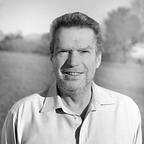Going for goals hammer and tongs
“The tragedy of life doesn’t lie in not reaching your goal. The tragedy lies in having no goals to reach” (Benjamin Mays)
Whomever I speak to of late, people seem to be tired and overwhelmed at best or have lost hope at worst. This listlessness, indifference or lethargy in part has its origins in the populations of the world being overwhelmed by the corona virus pandemic. As I have listened intently to what people are saying, however, I am hearing another thread weaved through their sentiments — “leaders all over are failing: we have no-one to follow due to duplicity, corruption, self-interest, and vague direction”. People are existing, but not thriving. Some are struggling to survive. Most go through the daily motions or routine of life, but don’t really live. They seem to have lost their vision.
To go at something hammer and tongs is to go at it with the utmost exuberance, zest or enthusiasm. The figurative use dates from the late 17 thCentury and derives from the blacksmith’s forge where the blacksmith would typically use his hammer and tongs with great vigour, showering lusty blows while the metal was red-hot. It was spectacular to observe and fascinating to discover the useful item that the blacksmith was creating.
A blacksmith is a metalsmith who creates objects primarily from wrought iron or steel, but sometimes from other metals, by forging the metal, using tools to hammer, bend, and cut. Blacksmiths produce objects such as gates, grilles, railings, light fixtures, furniture, sculptures, tools, agricultural implements, decorative and religious items, cooking utensils, and weapons. In former times, the blacksmith had a general knowledge of how to make and repair many things, from the most complex of weapons and armour to simple things like nails or lengths of chain. The techniques of smithing can be roughly divided into forging (sometimes called “sculpting”), welding, heat-treating, and finishing.
The blacksmith can possibly teach us how to truly live and not just survive. His process applies as follows:
- Forging (sculpting) — this is taking the vision of what needs to be made and forging that vision into actuality through shaping the metal by hammering it when at the right temperature. With or without great leadership, individuals must still focus on a vision for their future and shape their lives accordingly. Goals that complement the vision should be set and excess should be shed. All one’s focus should concentrate on preparation and sculpting skillsets.
- Welding — adding on pieces that complement or reinforce that which one already has in place. “What is still lacking?” is the question that needs to be asked by the individual to ensure that everything has been done or accomplished to enable achievement of goals that have been set. Do I need to do a degree programme? Is there a technical skill that needs enhancing? Is there a way that I can be coached towards improvement in a particular area?
- Heat-treating — hardening and strengthening the product. Most people want to accomplish goals quickly, but without constant progress and alignment checks, results may not achieve sustainability criteria. Evaluation checks are necessary to ensure meaningful advancement.
- Finishing — a wire brush, files, grinding stones, emery wheels and abrasive paper are used to further shape, smooth and polish the surface. For people, finishing applies to putting the final touches to oneself and one’s skillsets to enable full contribution. It implies growth to the point where one can deliver over and over again meaningfully. It is about adding real value.
Despite poor leadership, people need to develop their vision and go for consequential goals hammer and tongs — with energy and purpose. We may not be able to rely on leadership fully, but we owe it to ourselves to make something special of our respective lives.
Originally published at https://www.stretchforgrowth.com on October 3, 2021.
